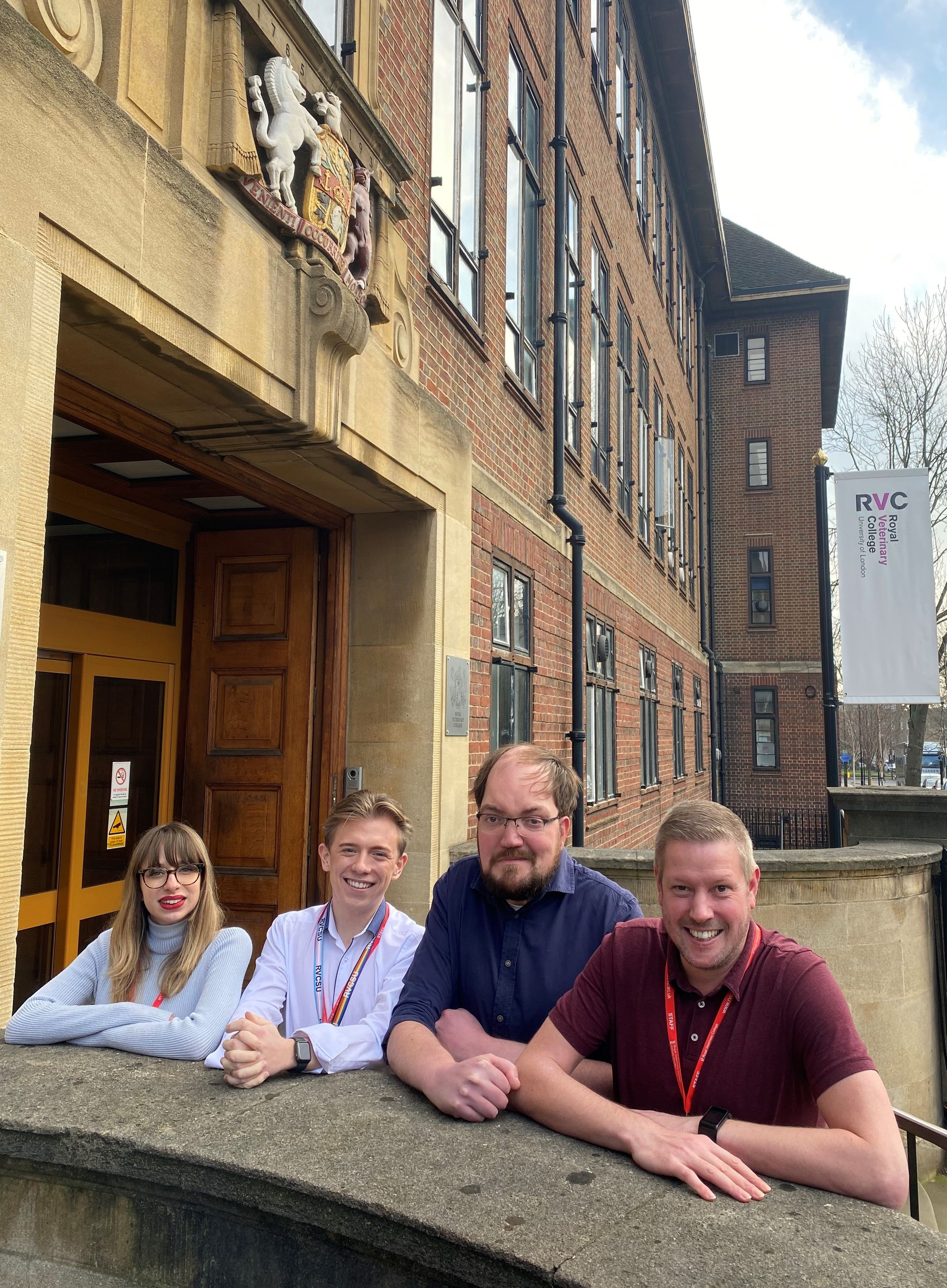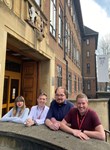New collaboration between the RVC and UCB seeks to better understand diseases of excessive bone formation
Research, led by the RVC, will explore disease causing mechanisms of two severe bone diseases characterised by bone overgrowth.

A new multi-year research project, led by the RVC, and in partnership with biopharmaceutical company UCB, will investigate potential novel therapeutic options and mechanism of disease progression in the ultra-rare genetic bone disease Sclerosteosis and the inflammatory condition Ankylosing Spondylitis, respectively. Although the cause of each disease is different, parallels can be drawn due to key pathologies being mediated by the growth of excessive bone in specific sites.
Sclerosteosis patients experience widespread bone overgrowth due to the loss of sclerostin expression, the body’s natural brake on bone formation. This can result in severe, and potentially fatal, pressure on the brain due to increases in skull thickness which can only be temporarily resolved through major surgery. Ankylosing Spondylitis patients experience bone overgrowth, most commonly in the spine, which can lead to pain, bone fusion and deformity. This is a major cause of structural tissue damage which can result in permanent disability.
The team of researchers, led by Dr Scott Roberts, Senior Lecturer in Translational Skeletal Research at the RVC, hope to make major advances in the understanding of these two diseases. Over the next three years the team will test new potential therapeutic options in preclinical models for Sclerosteosis. This is exceptionally important as there is currently no therapeutic approved to control the excess bone formation observed in this disease. While there are many approved therapeutics for Ankylosing Spondylitis, the control of pathological bone formation is limited. Therefore, the team will also be researching why this bone forms using specialised disease models via human stem cells.
Dr Scott Roberts, Senior Lecturer in Translational Skeletal Research at the RVC, said:
“I am excited to be working closely with UCB and RVC colleagues to investigate why pathological bone is formed in Ankylosing Spondylitis and how excessive bone formation can be controlled in Sclerosteosis. This research interaction will allow us to further our understanding of these specific diseases, with our accrued knowledge also likely to be applicable to other conditions of altered bone metabolism.”
Dr Tim Dreyer, postdoctoral researcher and Sclerosteosis patient, said:
“As a patient myself, I am thrilled to be part of a collaboration that aims to potentially develop a therapeutic for Sclerosteosis. It is an incredible opportunity to advance our understanding of this ultra-rare bone disease, whilst providing hope for a small group of patients and their families.”
Dr Sarah Brown, postdoctoral researcher at the RVC, said:
“I am excited to have joined the RVC and am looking forward to conducting research to further understand the mechanism of bone pathology in Ankylosing Spondylitis.”
Whilst bone is a central mediator of disease in Sclerosteosis and Ankylosing Spondylitis, it is worth remembering it also is an incredibly important organ. Indeed, bone tissue in the skeleton provides the body with both support and protection, making it critical to movement and absorbing impact. It is also an important endocrine organ and mineral depot, contributing to organ function via multiple signalling pathways.
Dr Alistair Henry, Senior Vice President and Head, Discovery Science at UCB, said:
“We are delighted to partner with the RVC on this important project to better understand disease progression in these two conditions. Although very different diseases, both conditions have a painful and progressive impact on those living with them and we hope this project may pave the way for treatment to improve people’s lives.”
Professor Andrew Pitsillides, Professor of Skeletal Dynamics at the RVC, said:
“This research gives us hope of making at least two significant impacts; it will allow us to test some of the central principles about how bone formation is controlled and, vitally, to simultaneously seek out a new therapy for a very rare familial disease.”
Notes to Editors
For more information please contact:
- Jasmin De Vivo (jasmin.devivo@plmr.co.uk)
- Press Line: 0800 368 9520
About the RVC
- The Royal Veterinary College (RVC) is the UK's largest and longest established independent veterinary school and is a Member Institution of the University of London. It was the first in the world to hold full accreditation from AVMA, EAEVE, RCVS and AVBC.
- The RVC is ranked as the top veterinary school in the world in line with the QS World University Rankings by subject, 2021.
- The RVC offers undergraduate and postgraduate programmes in veterinary medicine, veterinary nursing and biological sciences.
- In 2017, the RVC received a Gold award from the Teaching Excellence Framework (TEF) – the highest rating a university can receive.
- A research led institution with 79% of its research rated as internationally excellent or world class in the Research Excellence Framework 2014.
- The RVC provides animal owners and the veterinary profession with access to expert veterinary care and advice through its teaching hospitals and first opinion practices in London and Hertfordshire.
About UCB
UCB is a global biopharmaceutical company dedicated to discovering and developing treatments that aim to transform the lives of people living with neurological and immunological conditions. Because there is no such thing as an ‘average patient’ we use the tools, channels and scientific advances at our disposal to develop a deep understanding of a disease and the real needs of patients. Working in collaboration with leading researchers from academia, medical charities and industry we strive to deliver cutting-edge science, innovative drugs and practical solutions patients need to improve their quality of life.
We are inspired by patients. Driven by science.
You may also be interested in:
-
New collaboration between the RVC and UCB seeks to better understand diseases of excessive bone formation
Research, led by the RVC, will explore disease causing mechanisms of two severe bone diseases …

